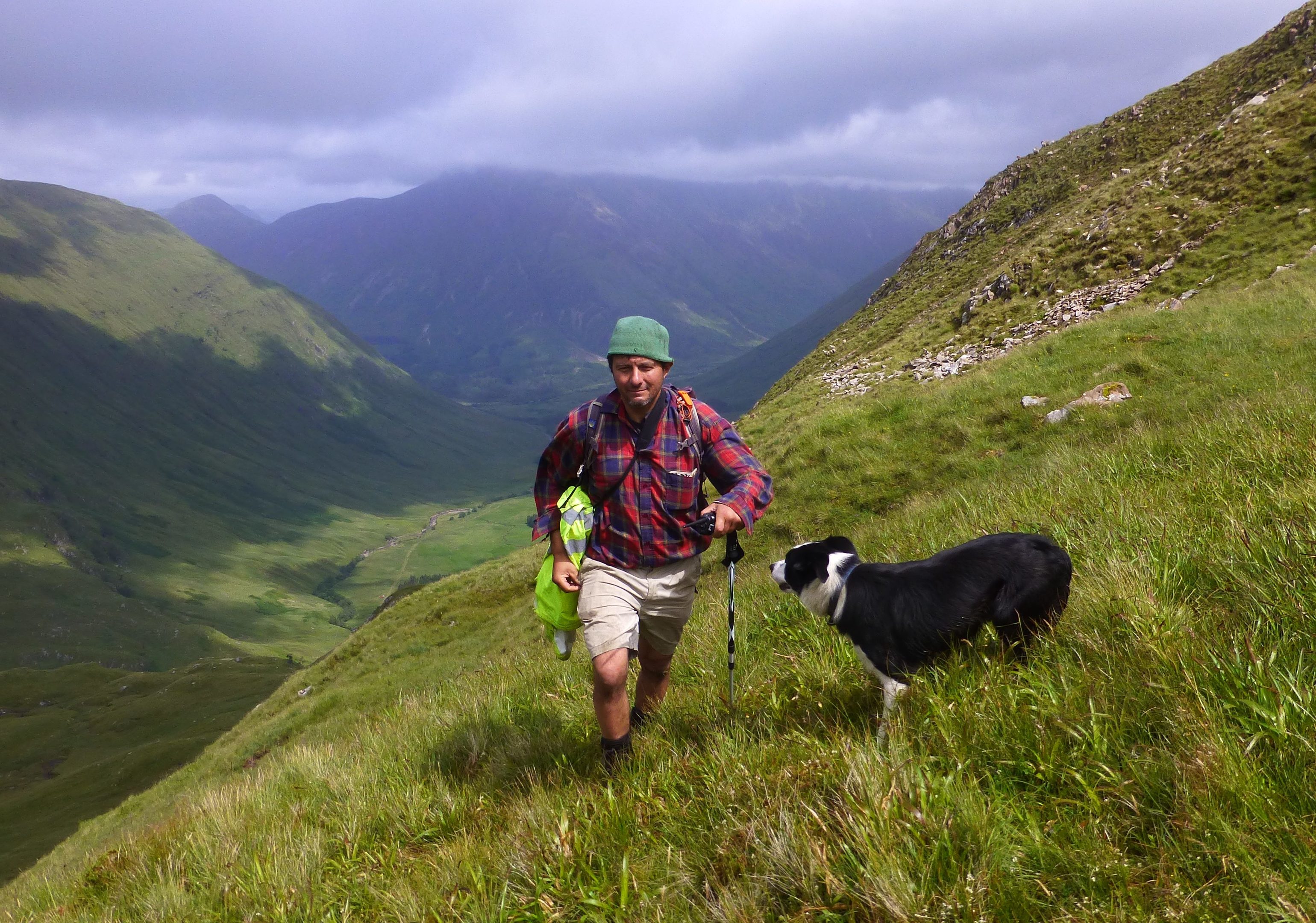The vertical cliffs, scree slopes and black rock faces of treacherous 3800ft mountains push sheep farming in Glencoe off the scale of the “less favoured” designation .
Tourists gaze up at the sharp peaks through the swirling mist or heavy snow from the notorious narrow pass, quite oblivious to the shepherding that takes place high up on these brutal slopes.
This land is unforgiving and better known for rock climbing tragedies than modern agriculture. Vehicles and quad bikes don’t cut it here and the vagaries of weather dominate every work decision, yet Paolo Berardelli and his family run a farming enterprise that ticks the environmental boxes that may well underpin future agricultural support for all less favoured areas.
This extreme farmland begins in Gleann Leac na Muidhe, the glen of the churning river, and extends to four high hills, including Bidean nam Bian, the highest mountain in Argyll. Around 3500 acres are owned by the Berardellis and they rent another 3000 acres from their neighbours, the National Trust for Scotland.
The 1200 hardy Blackface ewes that graze the hills in four hefts venture all the way to the high tops in summer, searching out fresh plants on dangerous rock ledges and avoiding the midges, flies, ticks and clegs far below. And it is their grazing pattern on two of the hills which fall under a Special Area of Conservation (SAC) designation that earns environmental payments which make up a quarter of Paolo Berardelli’s income.
The special botanical feature here is species-rich nardus which grows on the alluvial fans of limestone-rich land at the bottom of the steep mountain burns. The job of the sheep is to keep these plants from being choked by rougher grasses.
“Sheep often get a bad name from environmentalists, but if we removed the sheep here the nardus would disappear as we need a very specific amount of grazing that lets it come to a certain height and flower,” said Paolo.
“Without the sheep there wouldn’t be a SAC in Glencoe, that’s without doubt. Nothing else would keep the habitat the way it is.”
NTS ecologist Dan Watson works closely with Paolo to monitor the numbers of sheep and their grazing patterns on these Alpine-like pastures.
Paolo makes no secret of the support that is necessary to farm in Glencoe. Around 50% of his income is in basic payments, another 25% comes from the extra environmental payments and only 25% of revenue is from sales of lambs, ewes and wool.
He says the harsh environment and fox predation means the lambing percentage is low, at only 65-70% and makes a stark comparison with farming on richer land.
“If you take the financial value of the lambs we sell and compare it to what you’d sell on a lowland farm, I worked out you could produce the same monetary value off about 20 acres of good productive lowland with highly-productive ewes that are all having two cross Suffolk or Texel cross lambs – and you can run around in a quad bike and get them all in about 20 minutes,” he said.
“This is very dramatic landscape, very awe-inspiring, but very difficult terrain to farm.”
One illustration of that is the effort required to gather just one of the hefts in Glencoe. It involves crossing rivers, gullies and climbing thousands of feet up some of the steepest slopes in Scotland.
“You have to be careful,” said Paolo.
“There are a lot of obstacles on this land, so when we’re gathering sheep it’s quite an art to get them running in the right direction and keep them and yourself out of bad places.
“We need these to be hardy and thrive, so the bad thing about that is they’re individuals, they don’t flock together like ordinary sheep. They’ve definitely got a mind of their own.”
On the day I spent gathering with Paolo, his shepherd Sandy, three of his teenage children and two students, we used VHF radios to stay in touch when the mist came down and it took seven hours to gather one hill. One ewe lost her balance on a sharp slope and tumbled down, breaking her horn but bouncing back to run away with her lamb. Dogs have been lost while gathering gullies, sometimes falling hundreds of feet to their deaths.
It is no surprise, then that the Berardelli family is almost alone in farming these high western hills when traditionally there were sheep on every slope. Paolo acknowledges the difficulty of the lifestyle and the physicality of a style of farming where walking is the only possible transport, but he says he loves it.
“I grew up with it and now our children love it, and for me to see the bond they have between them for being on the hill and the way they can communicate with each other and work as a team to get the sheep off the hill is something that’s special, that not everyone gets to do, and that’s a rewarding thing for me.
“But the future very much depends on government policy and the willingness of government and public to support this type of agriculture, to keep sheep in the hills and families in rural areas.”
- “The Glencoe Gathering” will be broadcast on BBC Radio 4’s On Your Farm programme tomorrow morning at 06.35am










